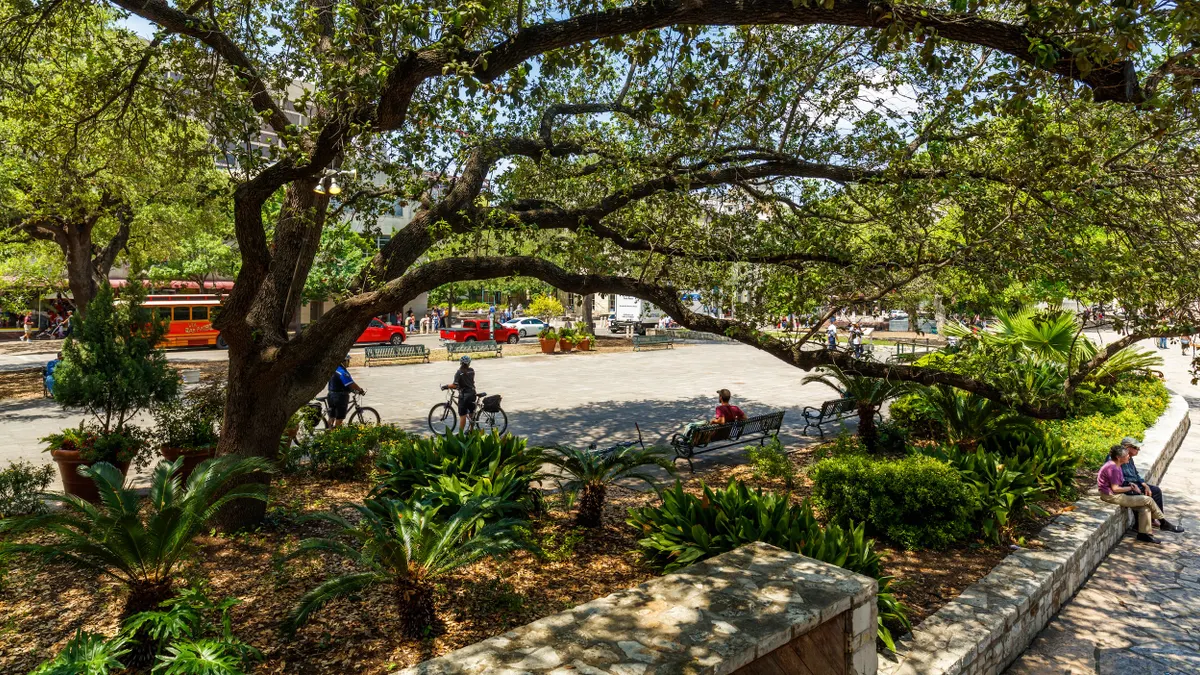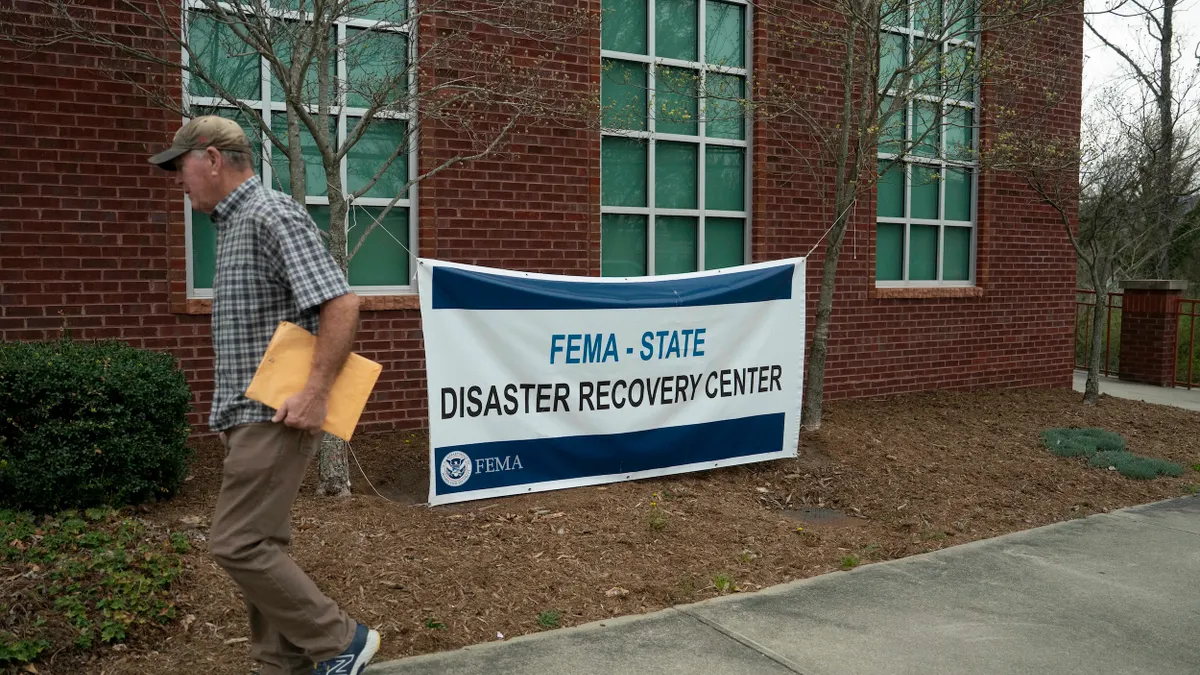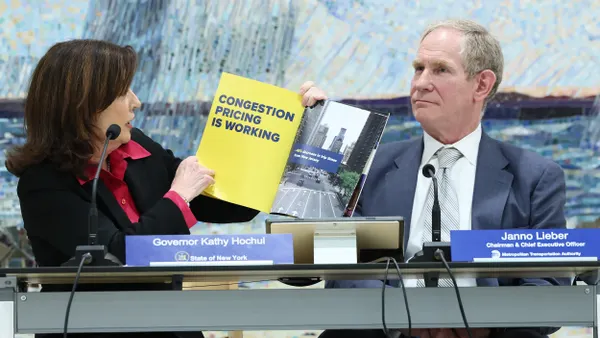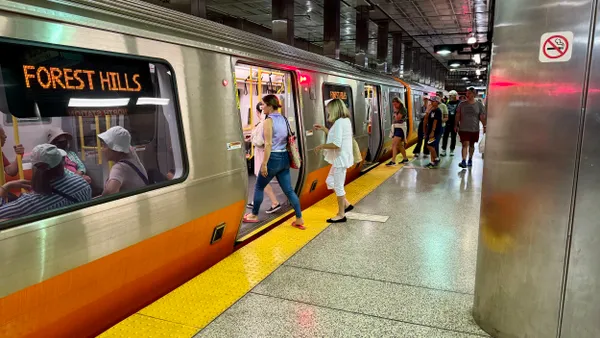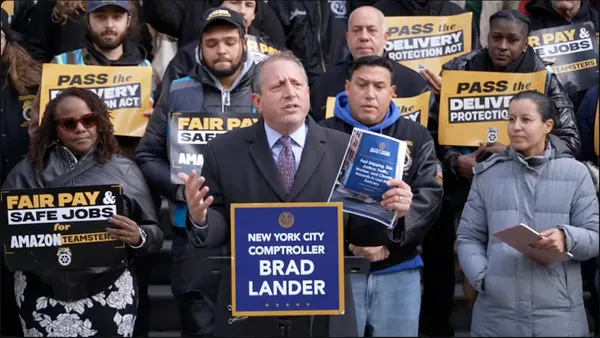Dive Brief:
- San Antonio had the best complete streets policy in the Smart Growth America and National Complete Streets Coalition’s 2025 report released Wednesday.
- The report evaluated 43 policies U.S. cities, states and other government entities adopted in 2023 and 2024.
- San Antonio took the top spot after revising a complete streets policy it first established in 2011. Clyde, Ohio, with a population just over 6,300, ranked third.
Dive Insight:
Complete Streets policies focus on street design that increases safety for pedestrians and cyclists of all ages and abilities, along with motorists and transit users. Governments have adopted more than 1,700 such policies worldwide since the idea was conceived over 20 years ago.
San Antonio’s transportation department updated its complete streets policy based on best practices and lessons from peer cities, according to a Smart Growth America case study. ActivateSA, a local “tactical planning initiative” and think tank, brought together a coalition of disability rights groups, active transportation organizations, public health agencies and environmental organizations to help improve the city’s policy.
San Antonio also looks to mitigate the potential effects of improved street infrastructure on living costs and calls for a task force to review how well the city meets its goals.
Clyde has a “large population of individuals with developmental and physical disabilities,” according to another case study in the report. Clyde adopted its policy in 2023 with the help of Sandco Industries, a local business that employs people with developmental disabilities. The city’s policy prioritizes bicyclists, youngsters, older adults and those with limited mobility or physical challenges. Upcoming projects include painted crosswalks, curb cuts and new streetlights as well as more bike racks, bus stops and accessible parking.
“The strongest policies lead to changes that make it safer and easier for people to get where they need to go—whether they’re walking, driving, biking, or taking transit," Heidi Simon, director of thriving communities at Smart Growth America, said in an emailed statement. “We applaud communities like Clyde and San Antonio for crafting thoughtful, actionable policies that reflect their local realities and are poised to deliver real, on-the-ground improvements.”
The average complete streets SGA policy score is 52 out of 100, an increase over previous reports, but the number of new policies adopted over the last two years was lower than the prior two years.
“The consequences that stem from policies that lack critical components” — such as the 10 elements of a Complete Streets plan SGA identifies — “could mean that tangible, long-term community changes are not implemented or not implemented in a manner that meets all users’ safety needs,” SGA said in its report.
Complete streets is one of several initiatives to make U.S. roads safer for all users. Despite these programs, pedestrian and bicyclist fatalities have soared over the past decade. A 2023 Smart Cities Dive analysis found that pedestrian deaths grew faster than traffic fatalities as a whole from 2010 to 2021, and that most large cities saw an increase in pedestrian fatalities from 2020 to 2022.
A January 2025 report from former Transportation Secretary Pete Buttigieg recounted actions the Department of Transportation took during the Biden administration to improve roadway safety. These included an effort to leverage artificial intelligence to help plan and create complete streets projects and documents to help assess and quantify the safety effects of such projects.
The Trump administration took down the Federal Highway Administration’s complete streets online resources.



